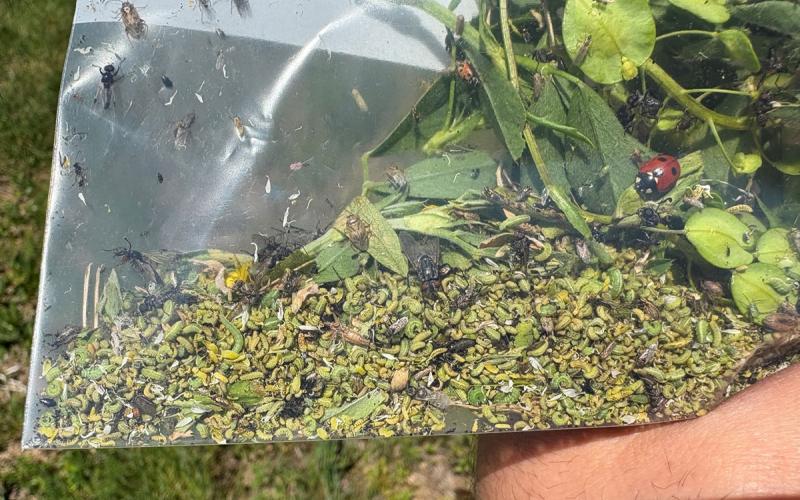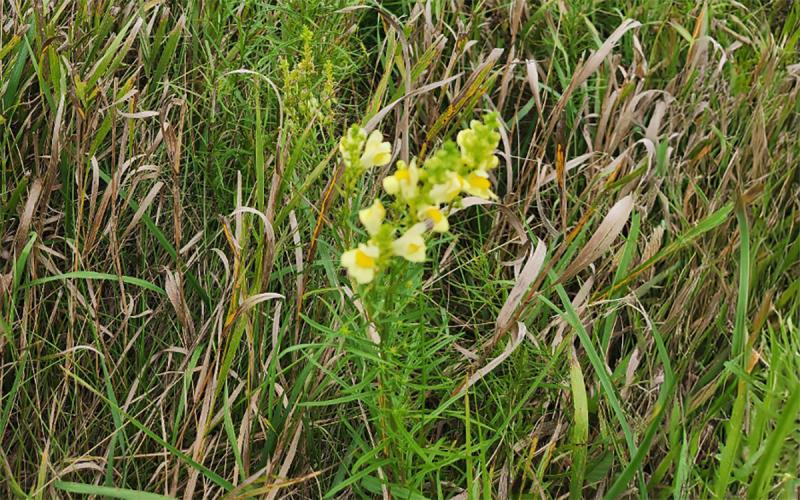Originally Submitted: May 27, 2021
Alfalfa weevil activity is still being reported across much of the state. Although the degree day estimates for South Dakota indicate that much of the state has populations that are pupating, these estimates are not accurate. Scouting should continue throughout South Dakota. For more information on scouting for alfalfa weevils, please refer to our previous article, Alfalfa Weevils Are Active, and It’s Time to Scout.
Calculating Degree Days for Alfalfa Weevils
To monitor for alfalfa weevils, we can estimate activity based on degree day accumulation. The equation for degree days is:
(Maximum daily temperature + Minimum daily temperature) ÷ 2 - The Developmental Threshold
For the alfalfa weevil, the developmental threshold is 48 degrees Fahrenheit. This equation is used for days during which the maximum temperature exceeds 48 degrees Fahrenheit. In cases where the minimum temperature is lower than 48 degrees Fahrenheit, the actual temperature is substituted by the 48 degrees Fahrenheit developmental threshold since no development is occurring below it. Degree day accumulation begins on Jan. 1. First overwintering adult alfalfa weevil activity is generally observed around 200-degree days and larvae hatch is generally around 300-degree days (Table 1).
The alfalfa weevil has four larval instars, with the first being the smallest larvae and the fourth being the largest larvae. The later instar larvae will consume additional leaf tissue, which results in increased defoliation. As a result, management would ideally be done while larvae are still in the first and second instar growth stages.
Current Estimate on Alfalfa Weevil Activity in South Dakota
|
Degree Days |
Alfalfa Weevil Activity (Overwintering as Adults) |
|---|---|
|
|
Limited to no activity of alfalfa weevils. |
|
|
Overwintering adult activity is observed in alfalfa fields (begin scouting fields). |
|
|
Spring laid eggs hatch. First instar larvae begin feeding. |
|
|
Second instar larvae feeding. |
|
|
Third instar larvae feeding. |
|
|
Fourth instar larvae feeding. (Period when greatest damage will occur) |
|
|
Pupation. |
|
|
Adult emergence (will overwinter). |
| Location |
Since January 1, 2021 |
(Overwintering as Adults) |
|---|---|---|
| Buffalo |
|
Fourth instar larvae feeding. (Period when greatest damage will occur) |
| Newell |
|
Fourth instar larvae feeding. (Period when greatest damage will occur) |
| Rapid City |
|
Fourth instar larvae feeding. (Period when greatest damage will occur) |
| Hot Springs |
|
Pupation. |
| Lemmon |
|
Pupation. |
| Faith |
|
Fourth instar larvae feeding. (Period when greatest damage will occur) |
| Cottonwood |
|
Fourth instar larvae feeding. (Period when greatest damage will occur) |
| Mission |
|
Pupation. |
| Selby |
|
Fourth instar larvae feeding. (Period when greatest damage will occur) |
| Gettysburg |
|
Fourth instar larvae feeding. (Period when greatest damage will occur) |
| Pierre |
|
Pupation. |
| Winner |
|
Pupation. |
| Aberdeen |
|
Pupation. |
| Huron |
|
Pupation. |
| Mitchell |
|
Pupation. |
| Tyndall |
|
Pupation. |
| Sisseton |
|
Pupation. |
| Brookings |
|
Third instar larvae feeding. |
| Vermillion |
|
Pupation. |


